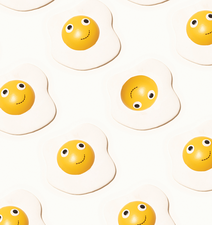Adjusting cell phone photo orientation with Go
Programming Snapshot – Rotating Photos with Go

© Photo by Girl with red hat on Unsplash
Cell phones often store photos upside down or sideways for efficiency reasons and record the fact in the Exif metadata. However, not all apps can handle this. Mike Schilli turns to Go to make the process foolproof.
Somehow, I seem to hold my cell phone wrong when taking pictures. It often happens that a picture that looks right in the phone's photo gallery is suddenly upside down or on its side when I want to send it to friends on WhatsApp. A quick look at the metadata of the photo in question reveals what's going wrong (Listing 1) [1].
It appears that my phone is saving images with the wrong orientation, but it is also storing the correction value, which shows up in the JPEG format's Exif header to tell you how the photo actually should be rotated. I don't know who came up with this idea, but assuming that any app looks in the Exif header first and then aligns the image correctly seems like a fundamental flaw to me. There's no doubt in my mind that the original camera app should perform the rotation when the picture is taken, rather than having the work done downstream time and time again by an unmanageable number of photo apps.
Upside Down World
Figure 1 illustrates that the cell phone still displays the image the right way round in its photo app, even though it was stored incorrectly. The desktop version of the Whatsapp client in the browser, however, obviously ignores the associated Exif header and sends the picture upside down (Figure 2). Imagine the recipient's reaction to receiving a message about my surf trip to Ocean Beach in San Francisco with a photo on its head!
[...]
Buy this article as PDF
(incl. VAT)
Buy Linux Magazine
Subscribe to our Linux Newsletters
Find Linux and Open Source Jobs
Subscribe to our ADMIN Newsletters
Support Our Work
Linux Magazine content is made possible with support from readers like you. Please consider contributing when you’ve found an article to be beneficial.

News
-
Mozilla Plans to AI-ify Firefox
With a new CEO in control, Mozilla is doubling down on a strategy of trust, all the while leaning into AI.
-
Gnome Says No to AI-Generated Extensions
If you're a developer wanting to create a new Gnome extension, you'd best set aside that AI code generator, because the extension team will have none of that.
-
Parrot OS Switches to KDE Plasma Desktop
Yet another distro is making the move to the KDE Plasma desktop.
-
TUXEDO Announces Gemini 17
TUXEDO Computers has released the fourth generation of its Gemini laptop with plenty of updates.
-
Two New Distros Adopt Enlightenment
MX Moksha and AV Linux 25 join ranks with Bodhi Linux and embrace the Enlightenment desktop.
-
Solus Linux 4.8 Removes Python 2
Solus Linux 4.8 has been released with the latest Linux kernel, updated desktops, and a key removal.
-
Zorin OS 18 Hits over a Million Downloads
If you doubt Linux isn't gaining popularity, you only have to look at Zorin OS's download numbers.
-
TUXEDO Computers Scraps Snapdragon X1E-Based Laptop
Due to issues with a Snapdragon CPU, TUXEDO Computers has cancelled its plans to release a laptop based on this elite hardware.
-
Debian Unleashes Debian Libre Live
Debian Libre Live keeps your machine free of proprietary software.
-
Valve Announces Pending Release of Steam Machine
Shout it to the heavens: Steam Machine, powered by Linux, is set to arrive in 2026.

